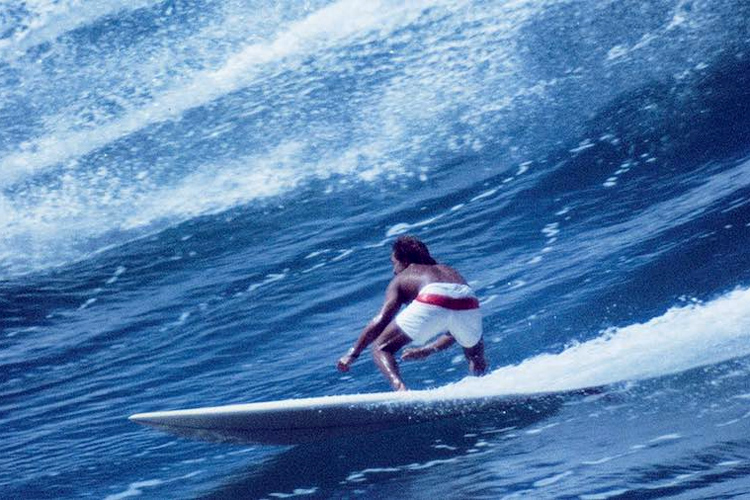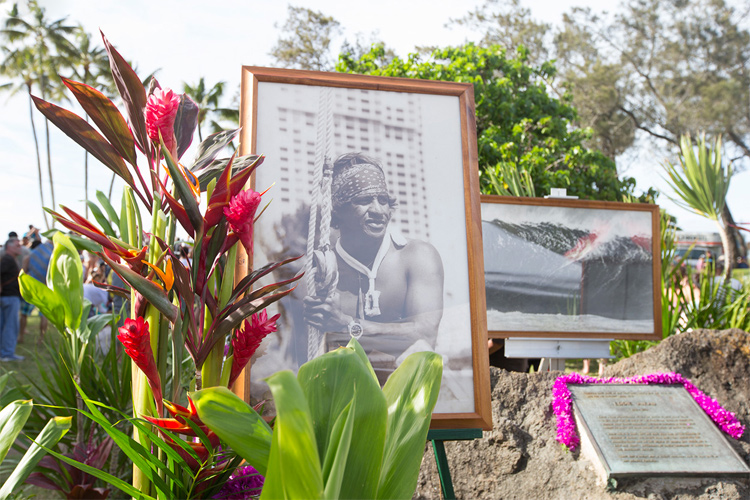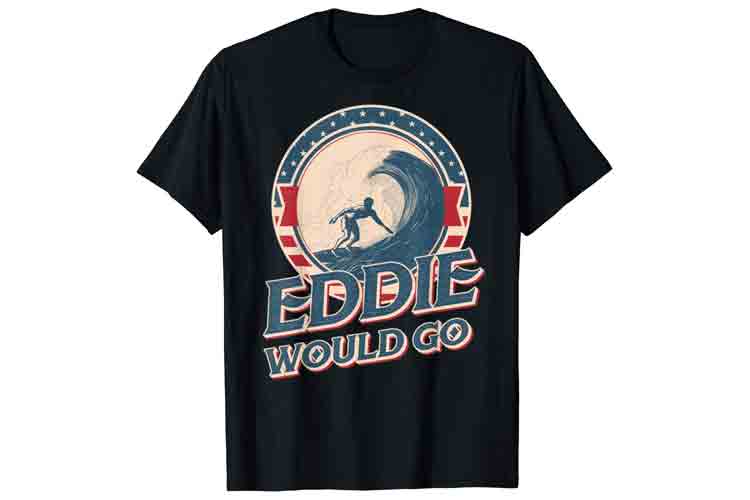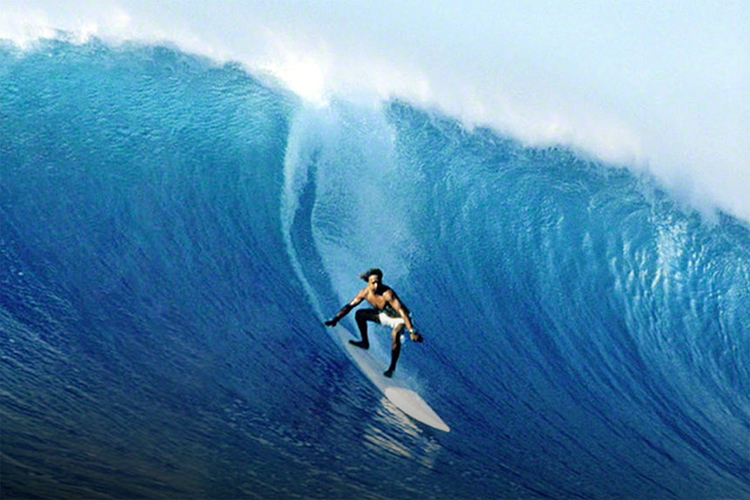"Eddie Would Go" is one of surf culture's most popular and famous expressions. It has a meaning and a consequence.
Eddie Aikau was a Hawaiian big wave surfer and North Shore of Oahu lifeguard.
The pureblood Hawaiian defined big wave surfing's early days, especially in the 1970s. Eddie surfed and tamed Waimea Bay, one of the biggest waves in the world, better than anyone.
But, for a long time, he was just a dark-skinned, low-profile wave rider, unwanted in the ever-growing tourist areas of Waikiki.
In 1966, the Catholic-raised Hawaiian surfed Waimea Bay for the first time for six straight hours and caught over a dozen 20-foot waves.
In 1972, Aikau was invited to participate in the Gunston 500. He was supposed to meet Bill Hamilton and Jeff Hakman at the Durban's Malibu Hotel, but the concierge didn't allow him to enter the building.
It was the apartheid era. So, Eddie stayed in a beachfront apartment alongside Shaun and Ernie Tomson.
"The color problem in South Africa, man, is really heavy. I fear to walk in the streets," the Hawaiian told a South African newspaper before flying home.

A Unique Waterman
Aikau was Waimea Bay's first lifeguard, and while on duty, he made over 500 and lost zero souls to drowning in the high surf.
He had a relaxed and unique bow-legged stance and rode giant waves with his arms often nearly fully extended.
The friendly yet shy regular footer became a six-time Duke Kahanamoku Invitational Surfing Championship finalist and won the event in 1977.
The Hawaiian surfer lifeguard joined the Hokulea, a 60-foot replica of a Polynesian voyaging canoe, for a 2,400-mile sailing journey from Hawaii to Tahiti, using ancient navigational techniques only.
On March 17, 1978, the boat capsized 20 miles west of Lanai, and the crew lost all provisions and telecommunications.
Aikau decided to paddle his board toward Lanai to get help. But he was never seen again.

The Birth of an Icon
Before his death, Eddie Aikau was the anti-star. He was just a low-key native Hawaiian, living in a secluded house next to a Chinese graveyard, having fun in monstrous waves, and saving the lives of beachgoers.
Somehow, he was inferior in his homeland.
However, after his passing, Aikau slowly became one of the greatest references in Hawaiian culture, alongside Duke Kahanamoku.
With the new age of big wave surfing, the surf industry felt they needed to honor the life of Hawaii's surfing hero.
The first Quiksilver Eddie Aikau Big Wave Invitational was held in the winter of 1985/1986 at Waimea Bay. The unique contest requirement was that waves had to be 20 feet or bigger.
When the organizers were deciding whether to raise the green flag, Mark Foo exclaimed: "Eddie Would Go." The expression stuck, and the contest got underway.
Paradoxically, the event became a tribute to the inspiring life of a humble man who didn't like competition.
The winners of the prestigious event are:
- January 3, 1985: Denton Miyamura
- February 23, 1986: Clyde Aikau
- January 21, 1990: Keone Downing
- January 1, 1999: Noah Johnson
- January 12, 2001: Ross Clarke-Jones
- January 8, 2002: Kelly Slater
- December 15, 2004: Bruce Irons
- December 8, 2009: Greg Long
- February 25, 2016: John John Florence
- January 22, 2023: Luke Shepardson
Only "Eddie Would Go"
When the Hokulea capsized, the crew had a conference and decided that Eddie Aikau "could go."
So, he tied the leash to his surfboard, picked up a few oranges, and tied a life jacket to his waist. He was ready for a five-hour paddle toward Lanai.
His sacrifice reached mythic status.
"No one surfed like Eddie. He would take off on a huge scary wave, and he'd be sibling down it with the biggest smile you ever saw. The rest of us were nervous. Eddie belonged there; it was his home," his younger brother Clyde Aikau once said.
Interestingly, and according to maritime historian Mac Simpson, "the phrase 'Eddie Would Go' predates Hokulea."
"Aikau was a legend on the North Shore doing what no one else dared to - pull people out of Waimea's giant surf. That's where the saying comes from."
"Eddie would go when no one else would or could. Only Eddie dared," underlined Simpson.
"Eddie Would Go" became a semantic symbol of courage, commitment, perseverance, and aloha.
Today, in many places across the world, you can find t-shirts, bumper and surfboard stickers, hats, all sorts of merchandise items, graffiti walls, and even tattoos with the famous surfer expression.
The North Shore legend was the only one who dared to face and defy extreme ocean conditions.
There's even a surf/garage rock band called Eddie Would Go.
The musical groups released four albums: "30K Over" ((1996), "Toyland" (1997), "Journey" (1998), and "Nothing For Nobody" (2000).
And there's even a song called "The Eddie Song."

Variations to the Popular Phrase
There's also the variation "Eddie Wouldn't Tow." The phrase was used to criticize the growth of tow-in surfing and protect the purity of the paddle-in practice.
Other adaptations include "Eddie Wouldn't Crow" (as opposed to bragging and egotistical surfers) - and "Eddie Would Hoe" (to support Native Hawaiian agricultural outreach programs).
"Eddie Would Ride" was another variation used in the 2008 election campaign to support the Honolulu Rail Transit project.
